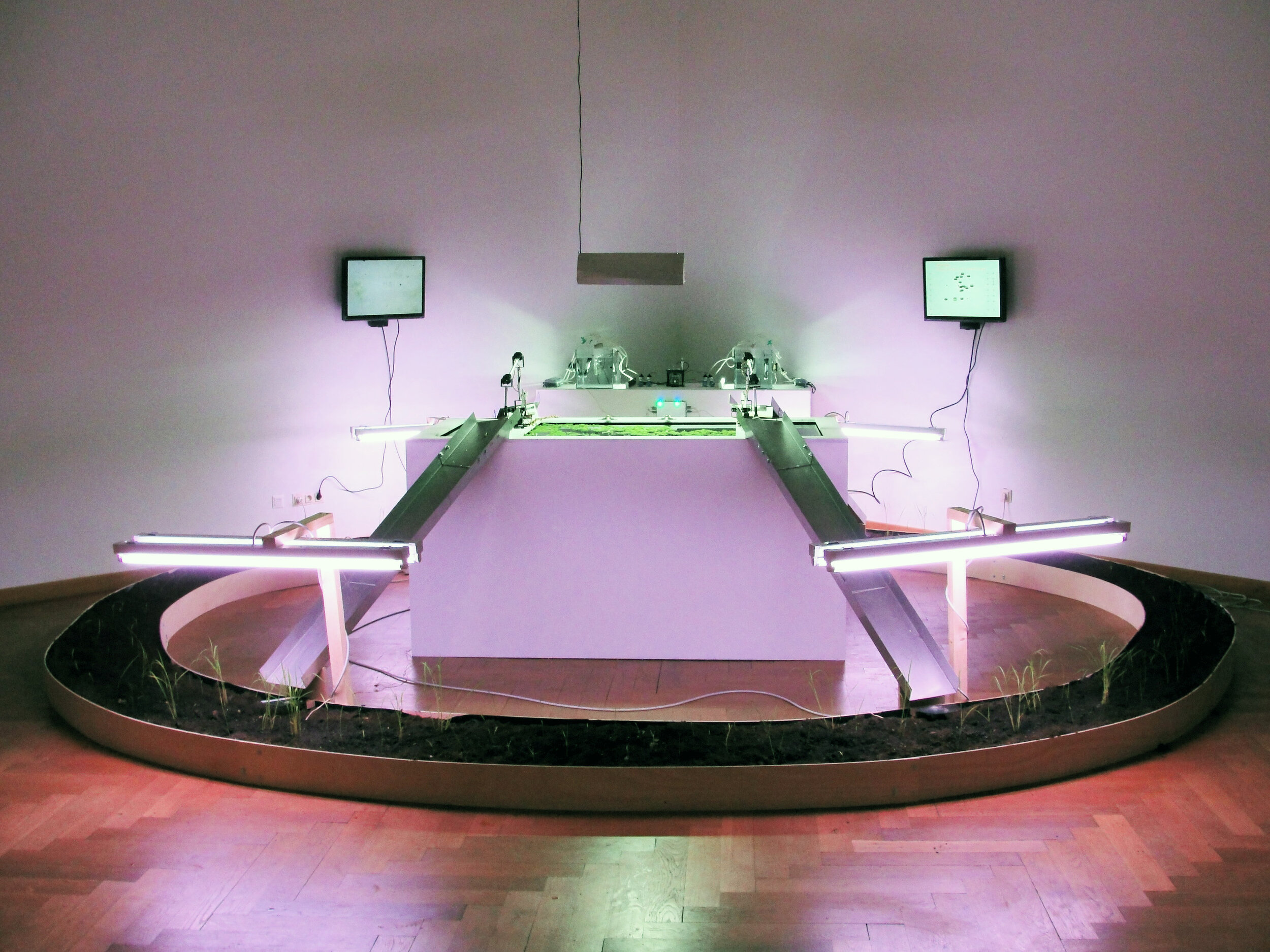autoinducer_ph-1
Autoinducer_Ph-1 (cross cultural chemistry) exploits a traditional rice cultivation technique from SE Asia where Azolla is grown in large quantities and used as an organic, nitrogen rich fertilizer in the rice paddies. In the installation this process is reworked in an overly complexified, industrial, laboratory style way as a reflection on western agricultural techniques, our modern relationships with nature and the networked, machinic nature of ecologies.
Featuring an assemblage of pond-like structures, electronics, laboratory and hydroponic equipment Autoinducer_Ph-1 probes into and interferes with the symbiotic relationship between the cyanobacteria Anabaena and the water fern Azolla. Notions of data and information systems inherent in the relationships between the organic protagonists of the installation, and how they may be augmented, are realised by a synthetic software-based bacteria that interacts with them in its assumed roles of part time symbiont and part time parasite. Video projections which display evolution of the GCS graphic environment, and highly magnified video of Anabaena cultured under a video microscope.
Outcomes of this complex relationship and its proximity to symbiotic or parasitic characteristics determine the behaviours of the robotic arm rice farming system that forms the physical bulk of the installation. The robotic arms are situated at each end of a central raised pool where natural Azolla is being grown. This Azolla is complete with its natural symbiont (Anabaena) and provides the nitrogen rich fertiliser for the rice paddy which forms a moat like circle around the central pool. If the core of the systems interprets the relationship as being symbiotic it will instruct the arms to begin to scoop out Azolla and deliver it to the rice, however if the relationship is interpreted as being more parasitic the arms will be instructed to withhold the delivery.
Beginning with very basic and functional behaviours the robotic arms are capable of evolving new expressive movements based on data they receive, movements which will ‘balletically’ and abstractly describe the ‘emotional’ state of the system as a whole. Their fundamental job, however, is to scoop Azolla from the pool and deliver it to the rice paddy via the ramps at each corner of the pool. At the bottom of each ramp is a spinning blade that serves to pulp and distribute the plant matter.
The installation loops biological, electro-robotic and computing processes together in a literally fertile interaction where the “primal soup” aspect of the Anabaena and Azolla cultures, and fragility of the young rice shoots, contrast strikingly with the computer-generated artificial chemistry molecules of the GCS.




